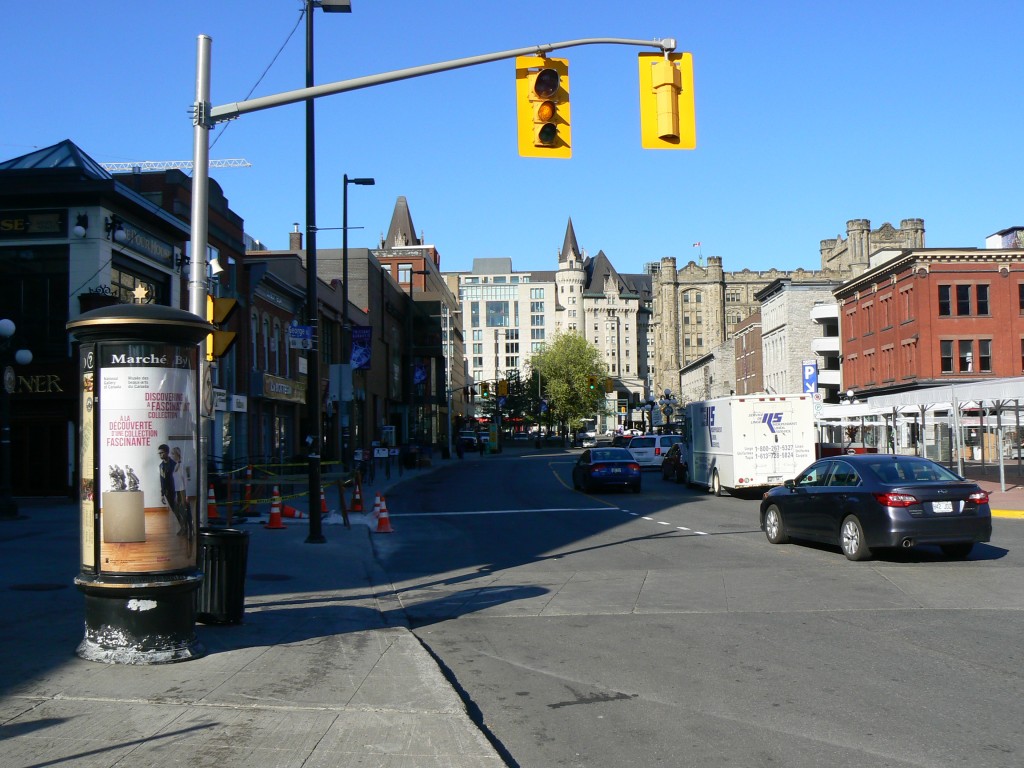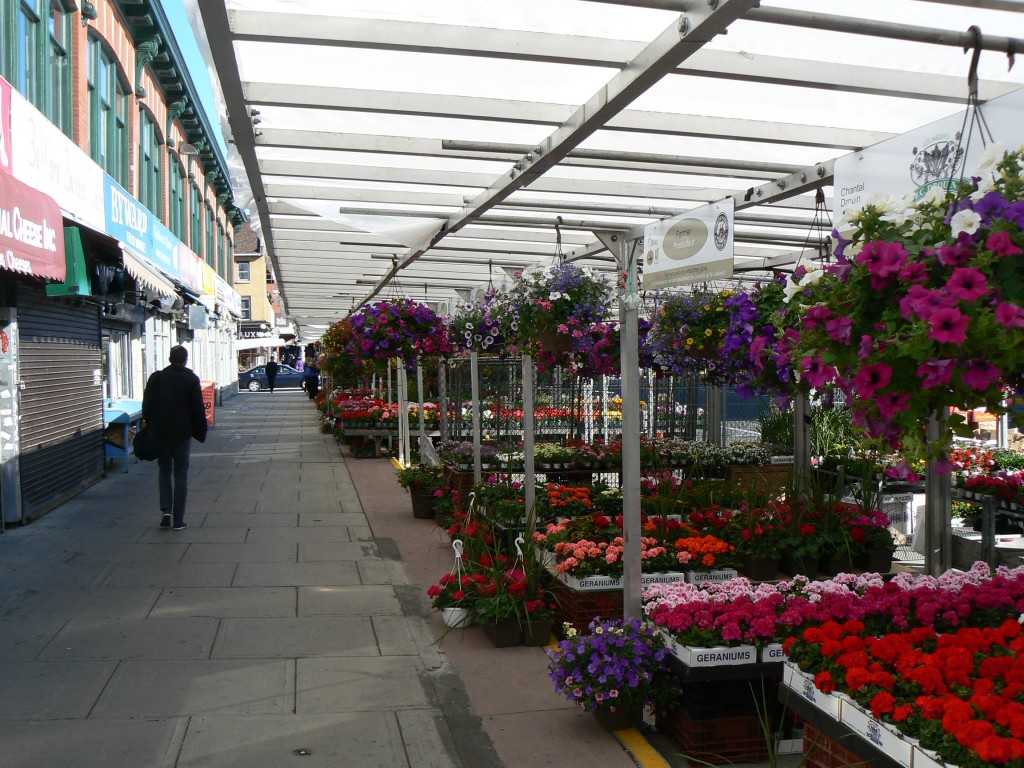Plaza among plans for Ottawa’s ByWard Market

George Street in the ByWard Market looking west towards the Chateau Laurier hotel and Parliament Hill. Photo by James Morgan
Changes are on the way for Ottawa’s ByWard Market. City Council recently approved a revitalization plan for the historic downtown market. The biggest part of the plan involves turning George Street into a pedestrian-friendly, European-style outdoor plaza connecting with the William Street Pedestrian Mall and the light rail station currently under construction. Some of the stands will be relocated away from the main market building in order to better showcase the historic structure.
The administration of the market, which is city property, will change, too. A new not-for-profit, city-owned corporation will be created to manage the market and focus on developing its commercial and tourism potential. Mathieu Fleury, the city councillor who represents the neighborhood, has been pushing for changes at the ByWard Market for a long time. He wants the eclectic destination to bring in more visitors and for the new plaza to serve as a “legacy project” of the celebration of Canada’s 150th anniversary in 2017.
The actual market aspect of the ByWard Market has struggled in recent years. There aren’t as many fresh produce and flower vendors as there used to be. Farmer’s markets in other parts of the city are often more accessible for vendors and customers alike. There are specialty shops in the buildings, but the area is almost better known by residents and tourists alike for its dining and nightlife scenes. The close distance to the University of Ottawa campus and Parliament Hill make the market popular with students and staffers. The neighborhood is a sort of transitional zone between the downtown with its government offices and upscale retailers and Lower Town, which has economic and social challenges. Three of Ottawa’s largest homeless shelters are within a short walk of the market. For several years, the local business association has hired extra security guards to walk the streets during the peak tourist season in order to give visitors peace of mind.
ByWard Market vendors don’t seem too enthusiastic about the changes that are coming. “A market is a market,” said Huguette Lacroix, who sells plants and flowers from her greenhouses in Vars, east of Ottawa. She wants the area to remain a farmer’s market, and not become a tourist attraction, adding that tourists don’t buy flowers because they don’t usually have a way of taking them home. Vegetable vendor Jeremy Schell said the new George Street plaza and relocating some of the stands “won’t do a thing,” and just cause disruption. Schell would rather see other issues addressed, like banning dogs from the market area. He said he often sees pet owners not cleaning up any evidence their dogs leave on the sidewalk.
ByWard Market’s history is basically the modern history of Ottawa. The streets were surveyed by Lieutenant Colonel John By, the city’s founder, who also supervised the construction of the Rideau Canal. Ottawa was originally named Bytown after him and the area of the market became known as the ByWard. The market itself began in the 1820s. In Ottawa’s early days as a bustling lumber town, the market and Lower Town area was mostly working-class of Irish and French heritage and Roman Catholic. The English and Scottish protestant establishment lived and worked up the hill across the canal in what is today called Centretown. Today’s ByWard is a mix of every culture, lifestyle, religion, and income imaginable. The changes on the way for the part of Ottawa most people just call “the market” will add to its already significant place in the city’s history.
Tags: business, ByWard Market, canada, city government, history, ottawa








